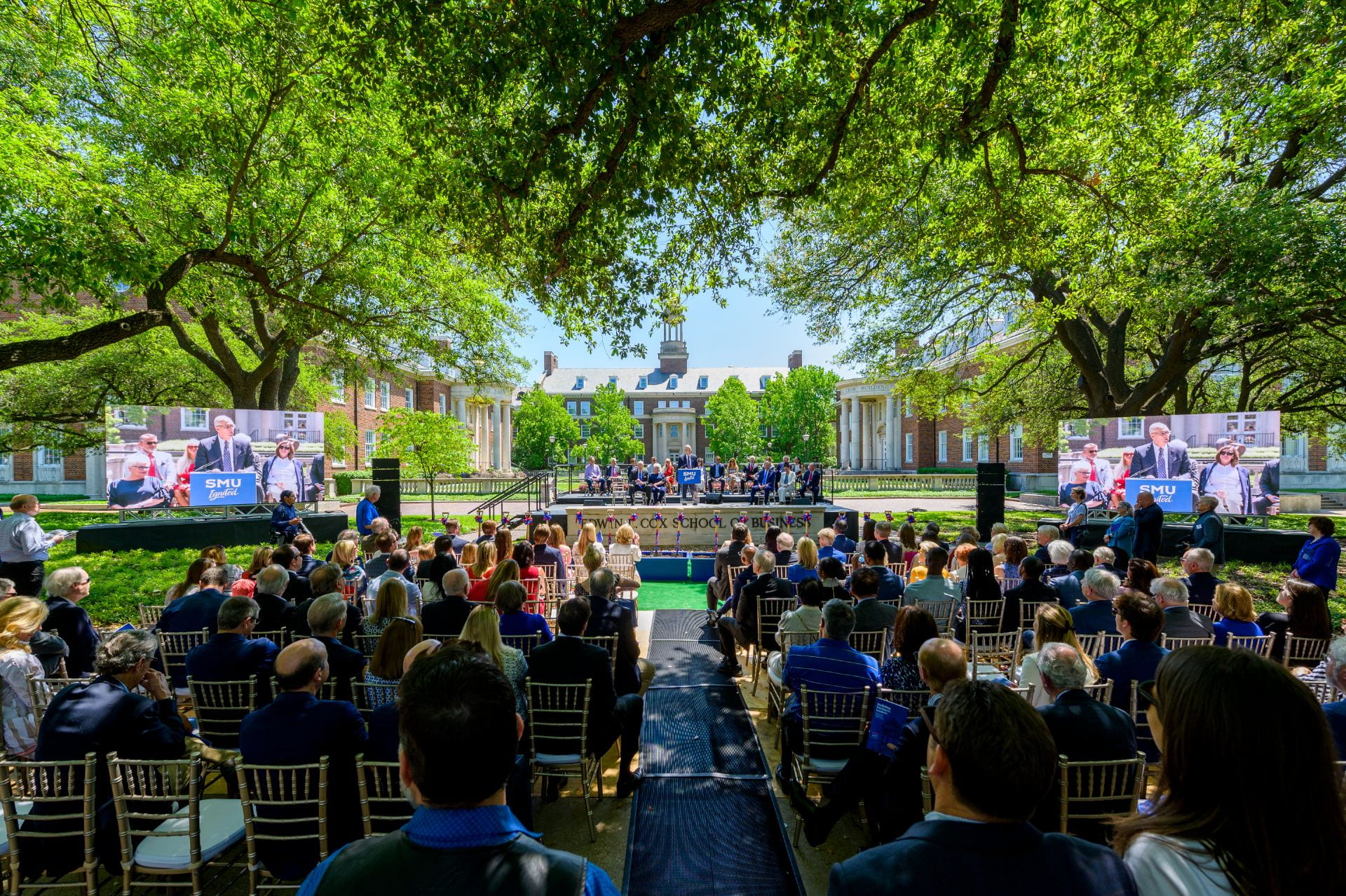In the summer of 2011, Maria Langlois along with fellow cyclists from The University of Texas at Austin, embarked on a journey of more than 4,000 miles from Austin, Texas, to Anchorage, Alaska to raise money for cancer research. Her journey across North America eventually translated into a research interest. Today, in a recently published paper titled “Experiencing Nature Leads to Healthier Food Choices,” SMU Cox Marketing Professor Maria Langlois, with co-author Pierre Chandon, explore how exposure to nature encourages healthier food choices.
“On the bike tour, I witnessed something remarkable with myself and my teammates,” Langlois recalled, “the tendency to lean towards more healthy, unprocessed foods while in natural environments, despite their relative lack of convenience and availability in many cases.” This idea became inspiration for her as a graduate student, embarking on a long journey towards understanding whether experiencing the natural environment can induce healthy food choices.
Across five experiments, comparing natural, urban, and neutral environments, Langlois and Chandon found that nature not only promotes better food quality choices, but does so without necessarily affecting the quantity of food consumed. One key finding was that exposure to nature led to healthier food choices, rather than diet-oriented food choices. “There is something about experiencing nature that leads us to take better care of our bodies and make healthier choices,” says Langlois. Additionally, the study showed that urban environments themselves do not lead to unhealthier food choices.
In their first study, Parisian residents took 20-minute walks either in Parc Montsouris, a large public park in Paris’s 14th arrondissement, or in nearby city streets with general urban features, including sidewalk-lined trees surrounded by large buildings. After their walk, participants returned to a snack buffet, which was framed as participants’ compensation for participation in the study. In reality, the snack buffet was more than just a reward for participation—but served to measure what and how much participants ate, the outcome of interest for the researchers. Remarkably, the nature walkers chose 72% healthy foods like fruits and nuts, while urban walkers selected only 47% healthy options. Total food consumption did not significantly differ, but the quality of foods selected did differed vastly. When faced with potato chips, cookies, and brownies, those on the nature walk preferred fresh fruits, nuts, and dried fruits.
To understand the robustness of nature’s effects on food choices, the researchers expanded their initial field study by introducing virtual exposure to nature through photographs. In a second study, participants were presented with a scenario in which they were lounging around in their hotel room with a window view that either depicted a nature scene, an urban scene, or the same window with the curtains closed (control condition). Then, participants were asked to make a meal selection—comprised of a main course, side dish, and beverage—from a room service menu that showcased a variety of healthy and unhealthy foods and beverages pre-tested for healthiness. Again, participants with the nature view made significantly healthier food choices when compared to those with the urban window view as well as those with the closed curtain window view.
“Not only did the results of our online studies provide converging evidence for nature’s influence on healthy eating,” Langlois acknowledged, “but they also allowed us to expand on our knowledge and understanding of this phenomenon.” For instance, food healthiness may sometimes become conflated with the notion of low-calorie, diet foods. One study, however, demonstrates that, after being exposed to nature scenes, consumers are more likely to select a natural, healthy snack and less likely to consume a diet, light snack or a tasty, indulgent snack.
These findings show that experiencing nature ignites a desire for healthfulness that is reflected in one’s choices, as opposed to activating aesthetic or weight loss-oriented goals. Therefore, it seems that experiencing nature leads to healthier food choices out of a genuine desire to be healthier, as consumers increase the overall importance that they place on food healthfulness.
Broader Impact
Understanding nature’s influence on our well-being has profound societal implications, says Langlois. The findings also echo the need for incorporating green spaces in urban planning and for businesses to consider using nature-inspired designs. Businesses can integrate nature-themed elements and sounds to promote healthier choices, she adds. Even virtual forms of nature, such as images and sounds of waves or birds, could likely benefit consumers.
The research notes that policymakers should consider how access to recreational nature spaces are important factors for urban planning and design. In the context of health disparities, research on green spaces in urban areas shows that African American and Hispanic populations often lack access to nature, potentially contributing to higher obesity rates in these communities. Addressing these disparities is crucial for public health and individual well-being.
It’s likely that investing in natural environments offers long-term benefits that extend beyond immediate gratification, fostering a healthier, more balanced society. As Langlois puts it, “As we start to learn and realize just how profound nature is, and the role it plays in our lives, we should consider it when designing our cities and other places where people gather.”
The paper, “Experiencing nature leads to healthier food choices” by Maria Langlois, Cox School of Business, Southern Methodist University and Pierre Chandon of INSEAD, Fontainebleau, France, was published in Communications Psychology in April 2024.
Written by Jennifer Warren.














